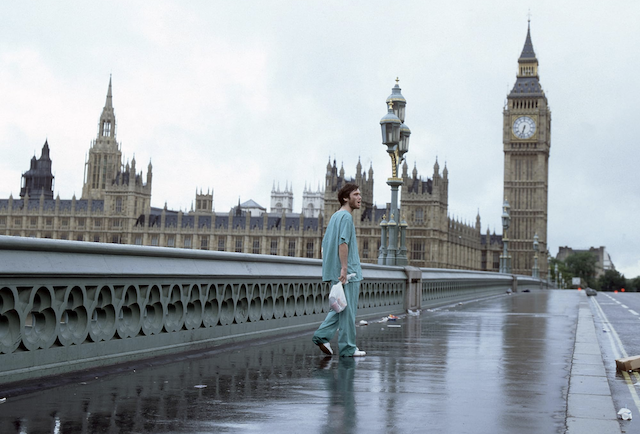
© 2002 Fox Searchlight
Danny Boyle’s zombie flick 28 Years Later—a sequel to 28 Days Later (2002) and 28 Weeks Later (2007)–has been shot on an iPhone 15 Pro Max.
Boyle and his cinematographer Anthony Dod Mantle had made news nearly a quarter century ago when they used a Canon XL-1 to shoot 28 Days Later, the first film in the trilogy. The duo went on to win Academy Awards for Slumdog Millionaire.
In the original 28 Days Later, Cillian Murphy played the role of a British man who awakes from a coma to find that the UK has been attacked by a virus that turns its victims into savage zombies.
Like the other films in the series, Alex Garland is returning as the screenwriter. According to press reports, Boyle and Mantle shot 28 Years Later between May and July of this year in England but tried to keep things under wraps until a photo surfaced indicating that the lens had been connected to a protective cage surrounding the iPhone. Published reports have suggested that the device was a depth-of-field adapter that was released by Beast back in March. The adapter is designed to project images from the lens onto a screen, which is subsequently recorded by the smartphone.
The new film is not the first to be shot with iPhones. Others include Sean Baker’s 2015 effort Tangerine and Steven Soderbergh’s Unsane from 2018, but both were limited-release low-budget productions. 28 Years Later, by way of contrast, took $75 million to make. The 2007 sequel, 28 Weeks Later, was shot on film. It was directed by Juan Carlos Fresnadillo and starred Robert Carlyle and Idris Elba.
In a 2003 interview for American Cinematographer magazine, Mantle described the rationale for using the Canon XL-1 to shoot key scenes in London for 28 Days Later. “If I had shot those [scenes] on a big negative, it would have looked absolutely stunning,” he said, adding that “We would not have been allowed to shoot and take up so much space [required for shooting with film cameras] for two weeks at such a delicate time before early-morning rush hour.”

